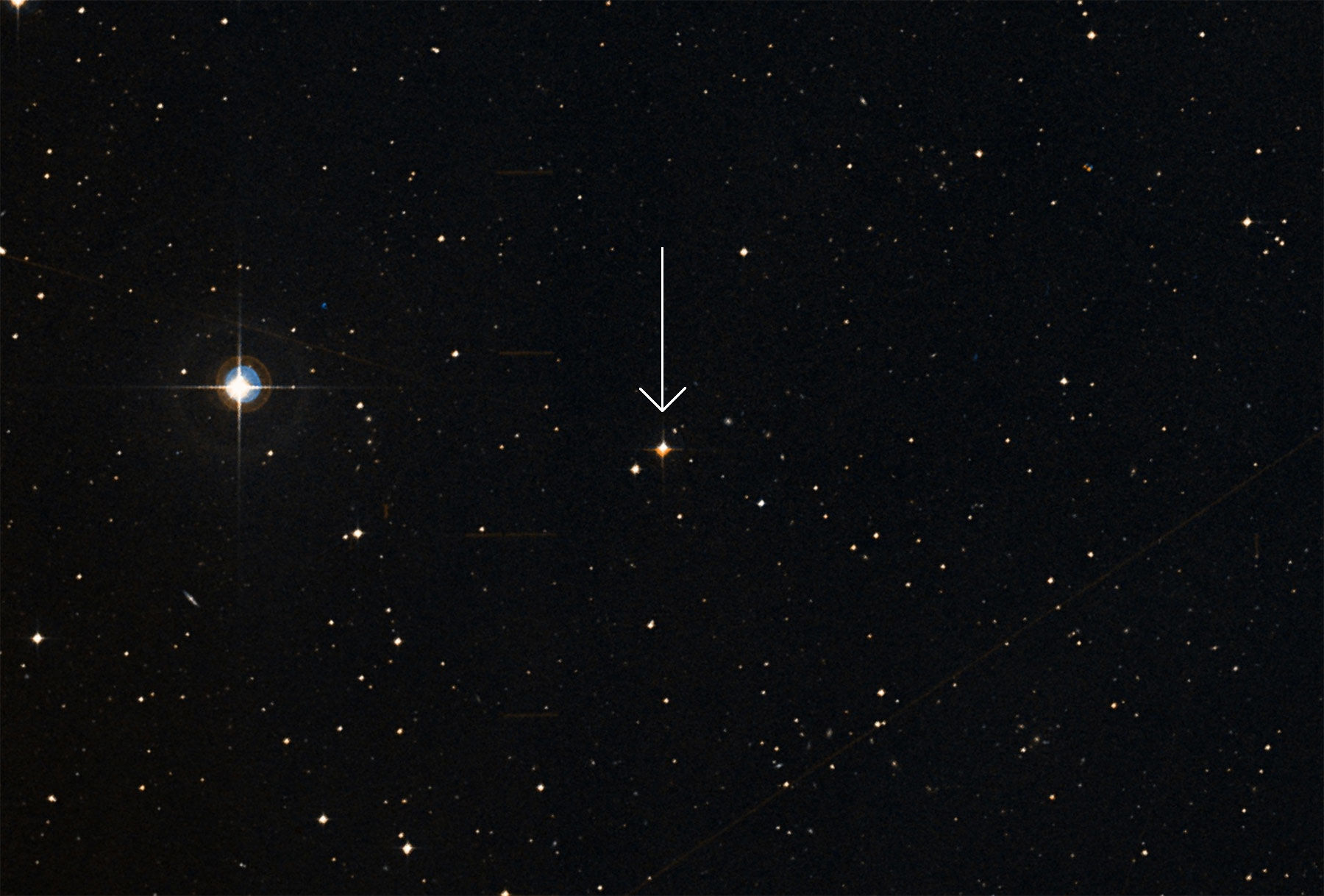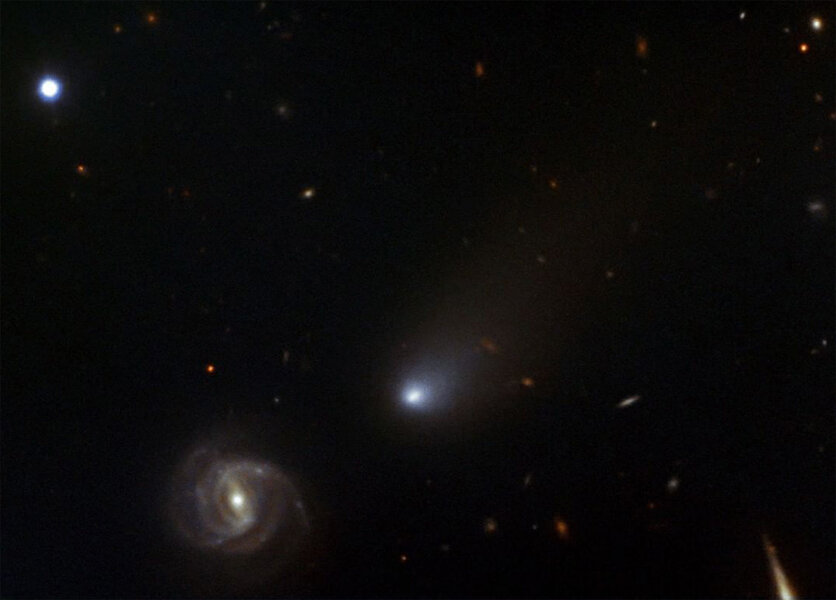Create a free profile to get unlimited access to exclusive videos, sweepstakes, and more!
Where does the interstellar comet 2I/Borisov come from?

Our solar system is currently being graced by the presence of a bona fide alien: 2I/ Borisov, a comet that came from another star.
Its interstellar origins are not in any real doubt; it came screaming in from deep space so quickly there's no way it started here and somehow got a slingshotted gravitational boost from a planet. Wherever it came from, it ain't local.
But where, exactly? Not too long ago I wrote about a study where scientists backtracked its path, trying to figure out if it came from a nearby star. Their best bet was Kruger 60, a binary star currently about 13 light years from Earth. About a million years ago, the comet passed them by about 5 light years, and the authors call this a plausible source for it.
I disagree. 50 trillion kilometers is a long way. If it came from, say, a few hundred billion kilometers I'd be more inclined to agree. Even the extended cloud of comets around a star (called the Oort Cloud) tends to be roughly a trillion kilometers across, not 50. So I'm not swayed.
But new research was just published pointing to a different star. They find that 910,000 years ago, Borisov passed just 0.22 light years from the star Ross 573. That's a distance of a little over 2 trillion kilometers, making it a far better candidate for the comet's original home. It's still not conclusive, but it's interesting.
The method they used is pretty cool. Remember, we're talking about this thing traveling for hundreds of thousands if not millions of years, so you not only have to trace the comet's trajectory back in space, but you also have to account for the motions of stars in that time as well! To do this they used data on over 7 million stars from the European Space Agency's Gaia mission, which I've written about many many times. It measures the brightness, positions, and most importantly the change in positions over time of well over a billion stars (yes, billion with a b). This change, called the proper motion, tells us the actual motion of a star through space, and that means it can be traced forward into the future or backward into the past.
Even that wasn't enough, though. They also did something clever: They added in the possibility of cometary outgassing. Comets are made of ices, gases frozen by the terrible cold of deep space. When they get near star that ice sublimates, turning directly into a gas, and blows out of the comet. This acts like a rocket motor, exerting a force on the comet that can change its trajectory over time. They model this using several different methods to see if they could come to a consensus about the comet's motion and potential origin.
They found 14 stars that came within a parsec (3.26 light years) of Borisov in the past. Of these, Ross 573 was the closest. It's a red dwarf, dim and cool compared to the Sun, and currently about 70 light years from Earth. They find that the extended cloud of comets surrounding the star is very roughly a light year in radius. Given that they find the comet came from the star at a quarter of a light year, this is then entirely plausible.
There is a problem here, though, and that's Borisov’s speed. If it came from Ross 573, then it was ejected at about 23 kilometers per second. That's pretty fast, and difficult to explain using the slingshot effect from a planet. Basically, if a comet swings past a planet on the right trajectory, it can steal some of the planet's energy of motion as it orbits the star, which boosts the comet’s velocity. You can get a few km/sec out of something like this, but 23 km/sec is a big ask. If Ross 573 were a binary that would help, since a star can give the comet a much bigger kick, but no other star is seen there.
The authors looked at other 13 stars, but the distance the comet gets from them is larger, making it less likely it came from there. Some are binaries, so the velocity is less of a problem but they find other problems with those systems.
As I read the paper I wondered what the odds are of a comet passing a star by 0.22 light years just randomly, and it turns out they do that calculation: You’d expect it to happen roughly once every 11 million years, give or take. Since the pass of Ross 573 happened less than a million years ago, that implies the encounter wasn’t random, implying it did come from there. Again, it’s not proof, but it supports the idea of Ross 573 being the home star.
In their modeling they also assume that the comet has not been traveling for more than 10 million years, because the accuracy and completeness of the Gaia catalogue gets pretty fuzzy looking back in time farther than that. If it has been plying interstellar space longer than that, then the encounter with Ross 573 is a coincidence, and it came from some star even farther away. If that's the case, then it's difficult to say where it came from. We may never find out.
That's a little bit aggravating, but my scientific itch is mollified by knowing that there will be more objects like this passing by. Heck, Borisov was discovered just a couple of years after 1I/’Oumuamua, the first known interstellar visitor (and still much weirder than Borisov, which looks like pretty much any ordinary solar system comet except for its speed). That strongly implies we will find lots more, especially when the Vera C. Rubin Observatory goes online in a few years. That will look at huge swaths of the sky and may find plenty more where these came from.
And maybe help us find exactly where one of these came from! That would be amazing. And given that the ESA is looking to build a mission that can try to catch up with and follow an interstellar comet for close examination, this may be the best way we have to look at another star’s denizens up close. It sounds like science fiction, but these days we're making big strides toward turning a lot of that fiction into fact.




























